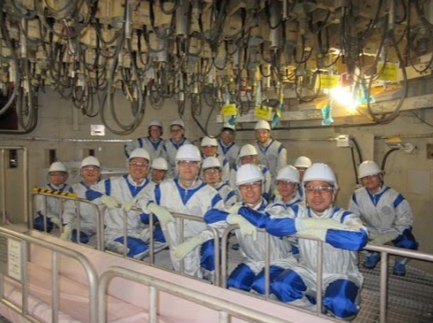
In March, 2011, following the Great East Japan Earthquake and Tsunami, there was a major nuclear incident at the Fukushima Daiichi Nuclear Power Plant. This left Japan with a significant nuclear decommissioning challenge. There are several challenges to decommissioning the Fukushima Daiichi reactor units, one of the most important being locating and understanding the nature of the debris inside the collapsed reactors. To solve this challenge, new robotic and scanning technology is needed that can work inside the damaged reactors.
The UK and Japan have a substantial research relationship that produces high quality outcomes, benefitting both our societies and economies. As an example, UK-Japanese joint research publications are ranked in the top 10% of the most-cited publications in the world. After the Fukushima Daiichi accident, SIN Japan helped the UK’s Engineering and Physical Sciences Research Council collaborate with the Japanese Ministry of Education Sport Culture and Technology (MEXT) and the Science and Technology Agency (JST) to seek collaborative research applications in the removal of fuel debris and environmental safety. This collaboration resulted in a Nuclear Civil Joint collaborative programme that was initiated in October 2013.This has enabled researchers in the UK and Japan to work together on the different technology innovations needed to address the Fukushima Daiichi challenge, which will also benefit the UK’s own decommissioning efforts in future years.
In September, I got to see the progress being made in developing new robotics and scanning technology at a research workshop and site visits in Fukushima. On this occasion, researchers from Bristol University and Tokyo Tech University came together to meet Japanese experts and TEPCO employees from the Fukushima Daiichi power plant to discuss the status of the nuclear plants in Fukushima and develop their research. The discussion focused on how to use ultrasonic imaging and measurement and on robotically animated arms that did not use electronics to reach remote areas and remove debris. These technologies have the potential to work in the radioactive environment inside the reactors. The workshop was followed by three days of fieldwork and visits to the nuclear plants from TEPCO Fukushima Daiichi, Fukushima Daini, JAPC’s Tokai NPP, Monju and Tsuruga NPP. This included going inside the reactor chambers of reactors of the same design as Fukushima Daiichi.
Through the incredible help of employees from TEPCO and JAPC, the visits enabled the UK and Japanese experts to have a deeper understanding of the physical challenges in actually undertaking the identification of the debris inside the reactors and the decommissioning. This gave the researchers the opportunity to fully appreciate the challenges their research needs to solve – notably, to envision the next steps in terms of robotic size and maneuverability and how the scanning technologies can be deployed. This has given the UK and Japanese scientists’ lots of research work to do on this important challenge. Best of luck to the researchers in both countries to develop their innovative solutions to help the decommissioning efforts!
